Fishes 1 - Vertebrates Lab Practical
1/82
Earn XP
Description and Tags
Flashcards for the lab practical, this one covering the first week of lab where we became familiar with 15 species of chordates.
Name | Mastery | Learn | Test | Matching | Spaced |
|---|
No study sessions yet.
83 Terms
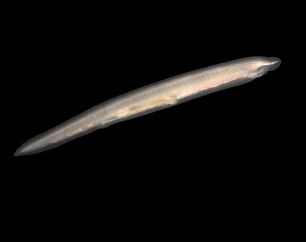
What Class does this specimen belong to?
Leptocardii
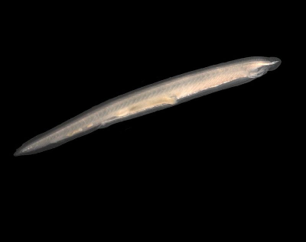
What Order does this specimen belong to?
Amphioxiformes

What Family does this specimen belong to?
Branchiostomidae
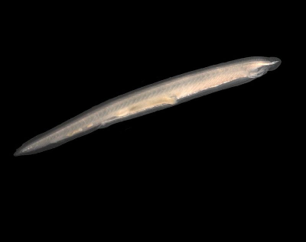
What is the scientific name for this specimen?
Branchiostoma lanceolatum
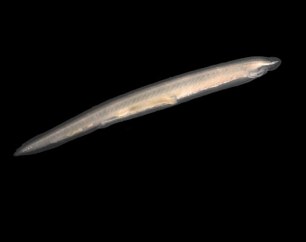
What is the common name for this specimen?
European Lancelet
What characteristics define the phylum Chordata?
-Notochord
-Dorsal Hollow Nerve Cord
-Segmentation
- Post-anal tail
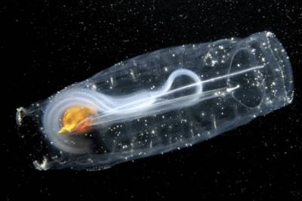
What Class does this specimen belong to?
Thaliacea
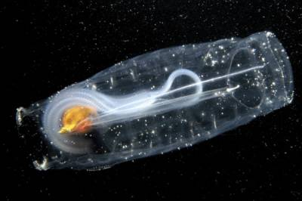
What Order does this specimen belong to?
Salpida

What Family does this specimen belong to?
Salpidae

What is the scientific name for this specimen?
Salpa salpa
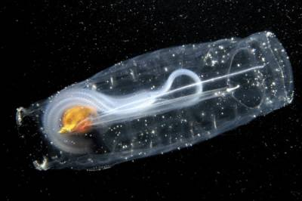
What is the common name for this specimen?
Salp
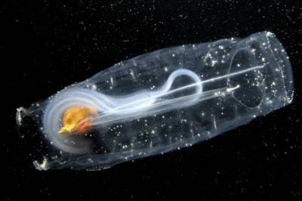
What are some key characteristics of this specimen?
-Cellulose tunic
-Two siphons
-Filter-feeder
-Solitary of colonial
-Planktonic
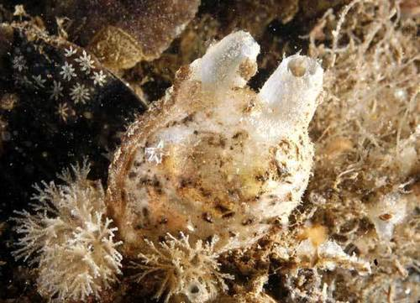
What Class does this specimen belong to?
Ascidiacea
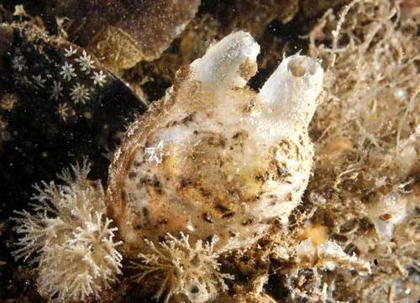
What Order does this specimen belong to?
Stolidobranchia
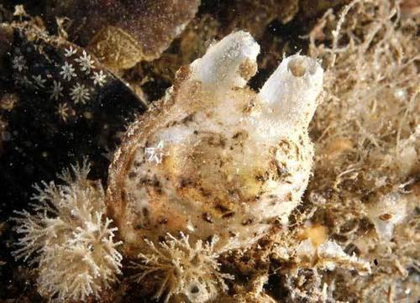
What Family does this specimen belong to?
Molgulidea
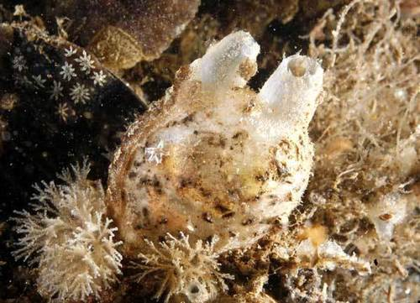
What is the Genera for this specimen?
Molgula
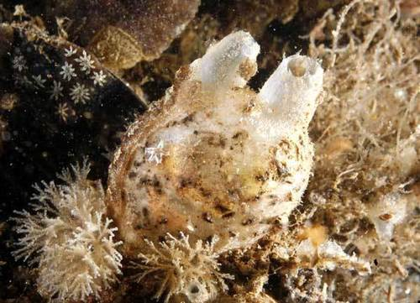
What are some key characteristics of this specimen?
-Cellulose tunic
-Incurrent and Excurrent Siphons
-Filter-feeder
-Solitary or colonial
-Benthic as an adult
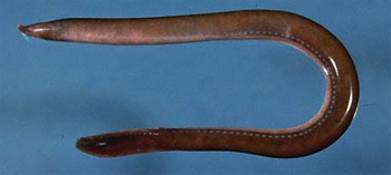
What Class does this specimen belong to?
Myxini
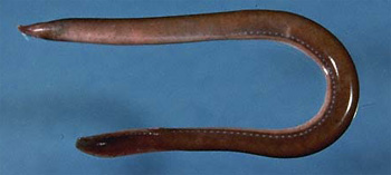
What Order does this specimen belong to?
Myxiniformes
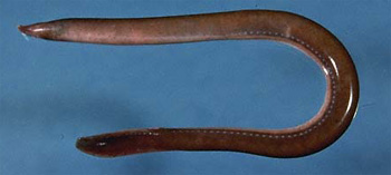
What Family does this specimen belong to?
Myxinidae
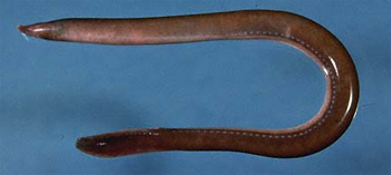
What is the scientific name for this specimen?
Myxine glutinosa
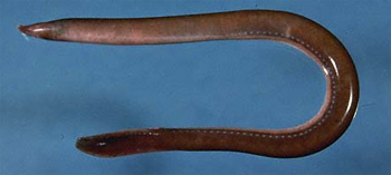
What is the common name for this specimen?
Atlantic hagfish
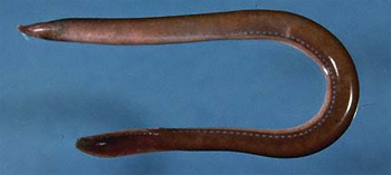
What are some key characteristics for this specimen?
-No paired fins
-Barbels around the mouth
-One pair of gill slits
-Continuous dorsal, anal, and caudal fins
-Single nostril (monorhiny)
-Eyes degenerate
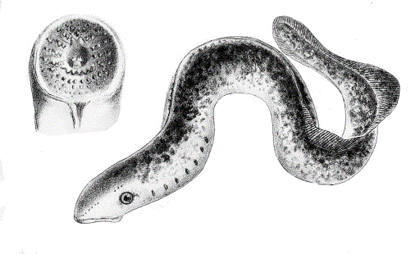
What Class does this specimen belong to?
Petromyzontida
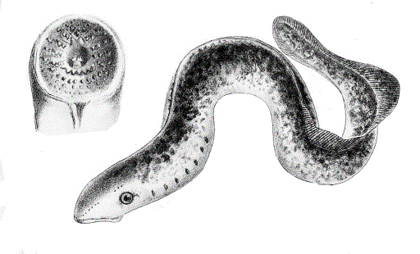
What Order does this specimen belong to?
Petromyzontiformes
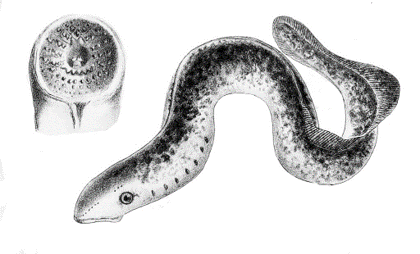
What Family does this specimen belong to?
Petromyzontidae
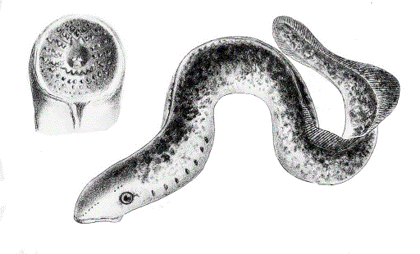
What is the scientific name of this specimen?
Petromyzon marinus

What is the common name for this specimen?
Sea lamprey
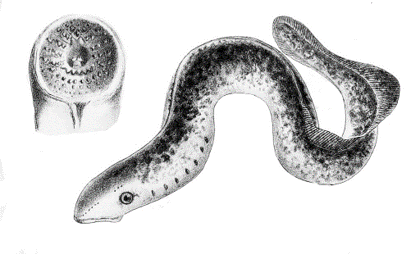
What are some key characteristics of this specimen?
-No paired fins
-Rasping teeth
-Continuous fins
-Single nostril
-Well developed eyes
How can you identify a member of Chondrichthyes
-Tooth whorl
-Pelvic claspers
-Cartilaginous skeleton
-Pelvic claspers
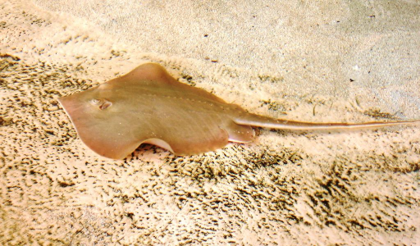
What Order does this specimen belong to?
Myliobatiformes
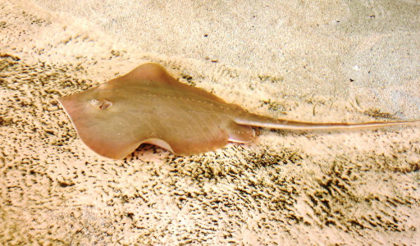
What Family does this specimen belong to?
Dasyatidae
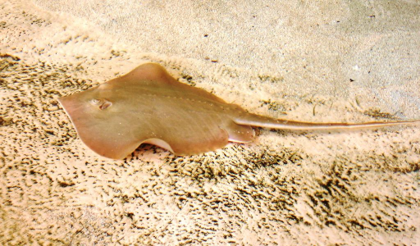
What is the scientific name for this specimen?
Dasyatis sabina
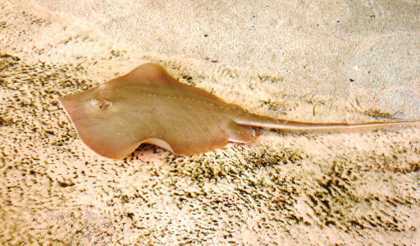
What is the common name for this specimen?
Atlantic stingray

How can you identify this specimen and differentiate it from other similar families?
-Presence of a spine
-No distinct pattern like other rays and skates present in lab
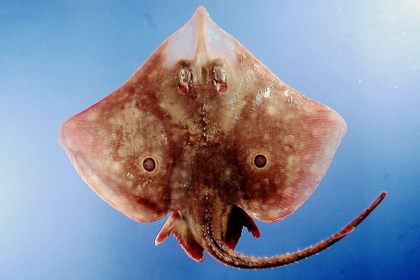
What Order does this specimen belong to?
Rajiformes

What Family does this specimen belong to?
Rajidae

What is the scientific name for this specimen?
Raja texana

What is the common name for this specimen?
Roundel Skate

How can you identify and differentiate this specimen from others like it in the lab?
-No spine on tail
-Very pointy rostrum
-Very noticeable spiracles
-Pattern: Dots may be present on the lab specimen on the pectoral fin, next to the main body region.
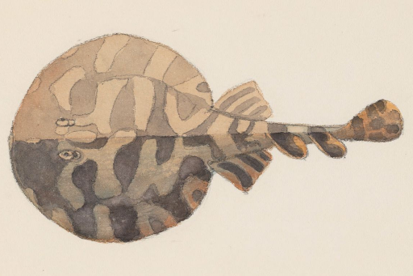
What Order does this specimen belong to?
Torpediniformes
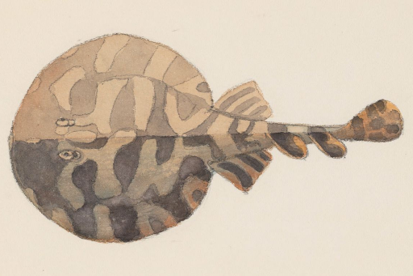
What Family does this specimen belong to?
Torpedinidae
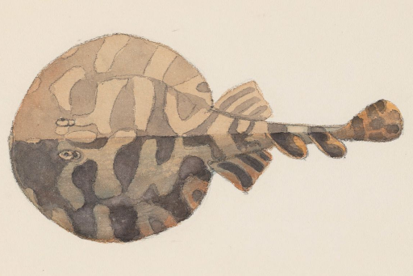
What is the scientific name for this specimen?
Narcine brasiliensis
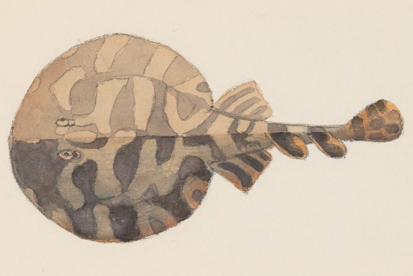
What is the common name for this specimen?
Brazilian electric ray
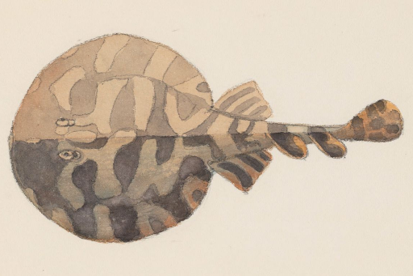
How can you identify and differentiate this specimen from others like it in the lab?
-Stout tail
-Dorsal fins on the tail
-Large pectoral fins
-Pattern: Thick marbled stripes
-Shape: More circular than pointed body section
What animals make up Carcharhiniformes?
Sharks

What Order does this specimen belong to?
Carcharhiniformes

What Family does this specimen belong to?
Carcharhinidae

What is the scientific name for this specimen?
Rhizoprionodon terraenovae

What is the common name for this specimen?
Atlantic sharpnose shark

How can you differentiate this shark from the other in the lab?
-Straight line body and head (no hammer)
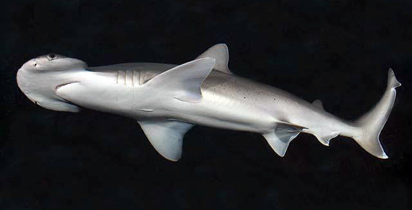
What Order does this specimen belong to?
Carcharhiniformes
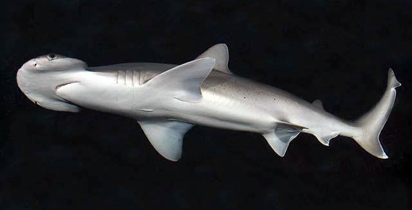
What Family does this specimen belong to?
Sphyrnidae

What is the scientific name for this specimen?
Sphyrna tiburo
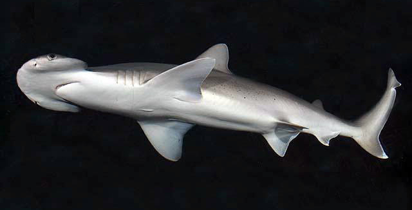
What is the common name for this specimen?
Bonnethead shark
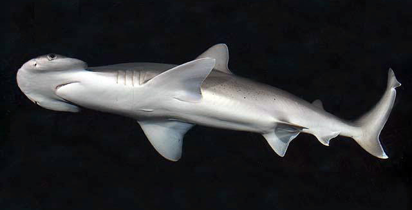
How can we differentiate this shark from the other present in the lab?
-Bonnet shaped head lined with Ampullae of Lorrenzini
What defines the group Osteichthyes?
-Ossified skeleton
-Fins supported by bony rays
-Teeth embedded in marginal mouth bones

What Order does this specimen belong to?
Lepidosireniformes

What Family does this specimen belong to?
Protopteridae
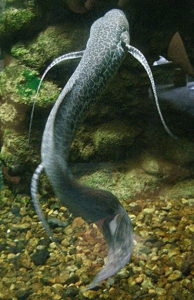
What is the scientific name for this specimen?
Protopterus aethiopicus
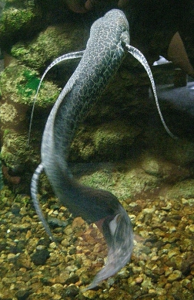
What is the common name for this specimen?
Marbled lungfish
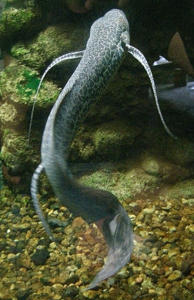
How can we identify this specimen and differentiate it from other present within the lab?
-Continuous dorsal, caudal, and anal fins
-Long fan-like pectoral fins

What Order does this specimen belong to?
Polypteriformes (poly-ptery-form-es)

What Family does this specimen belong to?
Polypteridae (Poly-ptery-dee)

What is the scientific name of this specimen?
Polypterus congicus

What is the common name of this specimen?
Congo bichir

How can you identify this species and differentiate this specimen from others in the lab?
-Spiny dorsal fins that are continuous into the caudal fin
How can you identify Acipenseriformes?
-Elongate body
-Unique rostrum in species present
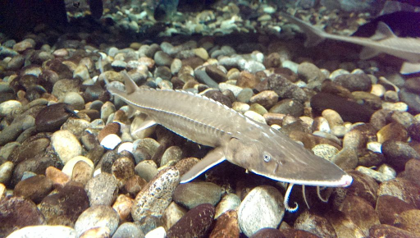
What Order does this specimen belong to?
Acipenseriformes
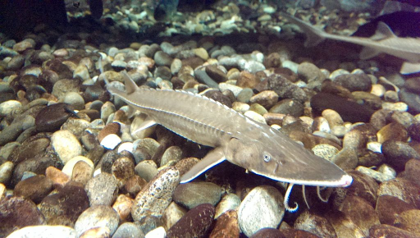
What Family does this specimen belong to?
Acipenseridae
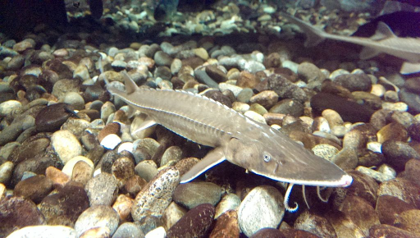
What is the scientific name for this specimen?
Scaphirhynchus platorynchus
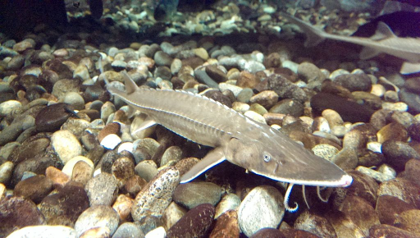
What is the common name for this specimen?
Shovelnose sturgeon

How can you identify this specimen and differentiate it from others present in the lab?
-Shovel shaped head
-Bony plates on the head and body
-Heterocercal caudal fin

What Order does this specimen belong to?
Acipenseriformes
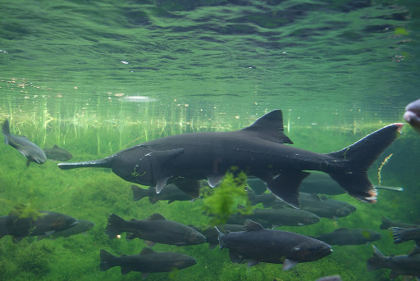
What Family does this specimen belong to?
Polyodontidae
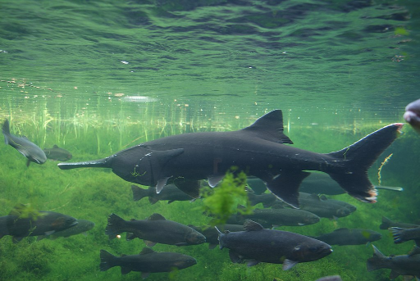
What is the scientific name for this specimen?
Polyodon spathula
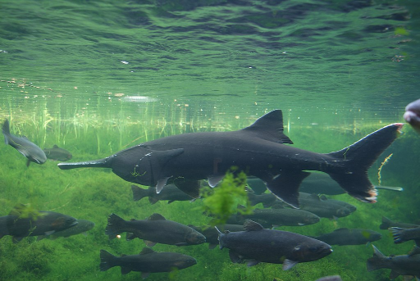
What is the common name for this specimen?
Paddlefish
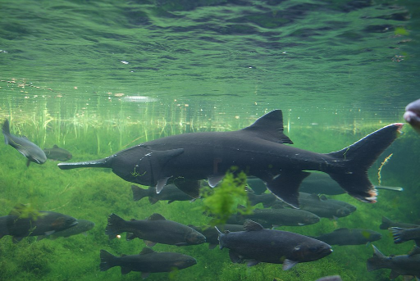
How can you identify this specimen and differentiate it from others present in the lab?
-Long, skinny rostrum that is shaped like a paddle
-Shark shaped streamlined body
-All sets of paired fins

What Order does this specimen belong to?
Amiiformes
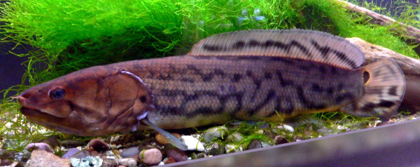
What Family does this specimen belong to?
Amiidae
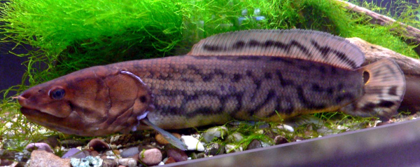
What is the scientific name for this specimen?
Amia calva
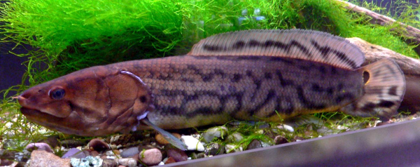
What is the common name for this specimen?
Bowfin
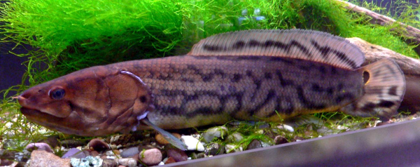
How can you identify this specimen and differentiate it from others present in the lab?
-Heterocercal caudal fin (but looks homocercal!, you have to feel the bones) : abbreviated heterocercal is the proper term
- Large mouth
-Elongated body
-Bony plate between the lower jaw bones (you can feel it if you run your hand below the jaw)